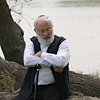The Book of Zohar. Chapter “The Night of the Bride,” Part 2
 The Book of Zohar. Chapter “The Night of the Bride,” Part 2 (abridged)
The Book of Zohar. Chapter “The Night of the Bride,” Part 2 (abridged)
139. Thus, “the Heavens declare the work of His hands.” These are the friends who have united in the bride (Malchut) by studying the Torah on the night of the holiday of Shavuot. They are all participants of the covenant with her, and are called “the work of His hands.” And she praises and notes each and every one of them. What is Heaven, firmament? It is the firmament, where the sun, the moon, the stars, and the signs of fortune (zodiac) are located. This firmament is called the Book of Remembrance, and it declares and records them, so they shall become the sons of His palace, and He will fulfill all their desires.
140. Day after day brings Omer – a sheaf. The holy day out of those days (Sefirot) of the King (Zeir Anpin) praises the friends, who study the Torah on the night of Shavuot. They say to each other, “Day after day shall bring a sheaf,” and praise it. And the words “night after night” refer to all the degrees, Sefirot of Malchut, that reign in the night, praise one another by each receiving from a friend, from another Sefira. And the state of complete perfection makes them beloved friends.
141. Does he speak of the others in the world who do not obey the Creator, and whom He does not wish to hear? But they made lines through all the earth, that is, these things make a line out of those that reside Above and out of those that reside below. From the first – firmaments are made, and from the second, from their return – earth. And should you say that they revolve around the earth in one place, it is said that they are also at the end of the world.
142. And since out of them Heavens were created, who resides there? He returned and said, “There is a shelter for the sun in them. This is the holy sun, called Zeir Anpin, and it dwells and resides there, and adorns itself with them.”
143. Since Zeir Anpin resides in those firmaments and clothes in them, he emerges like a bridegroom out of his wedding canopy, and rejoices and races along these firmaments, and exits them and enters, and races toward a tower in a different place. He emerges from one end of Heaven, from the Upper World, from the Highest place, from Bina. And his season – where is it? It is the opposite place below, i.e., Malchut, which is the year’s season that forms all the ends and binds everything – from Heaven to this firmament.
144. There is nothing hidden on account of the year’s season and the phase of the sun that revolves in all directions. And there is no concealment, i.e., not a single Supernal Degree is hidden from him, for all were bound together and everyone appeared before him, and none could be concealed from him. Thanks to him and thanks to them he returned to them, to the friends, in the phase of complete return and correction. All this year and all this time is for the Torah (to study it), as it is written: “The Creator’s Torah is perfect.”
145. The word HaVaYaH is written six times, and there are six verses from “the Heavens declare” and until “The Creator’s Torah is perfect.” And this is the secret of the word BERESHEET, which consists of six letters: “THE CREATOR CREATED ET (THE) HEAVENS AND THE EARTH,” six words in all. The other sources of the verse from “The Creator’s Torah is perfect” and until “they are better than gold” correspond to the six utterances of the name HaVaYaH in them. The sources from “the Heavens declare” through “The Creator’s Torah is perfect” are for the six letters in the word BERESHEET, whereas the six names are for the six words from “the Creator created” through “the Heavens and the earth.”
146. As they were sitting and talking, Rabbi Elazar, the son of Rabbi Shimon, entered. He said to them: “Certainly, the face of the Shechina has come, hence I called you Pniel (Pnei–face + El–Creator = the Creator’s face),” for you have seen the Shechina face to face. And now that you have attained Benayahu Ben-Yehoyada, it certainly refers to Atik, the Sefira of Keter, just as everything else that occurred afterwards, as it is written in the Torah: “And he slew the Egyptian.” And he who is concealed from all – is Atik.
147. The words, “He slew the Egyptian” are explained in another place, i.e., at a different degree, in a different way. He opened and said, “He slew the Egyptian, a man of good stature, five cubits high.” All of this refers to the same secret. This Egyptian is the one who is well-known and is described as “very great in the land of Egypt in the eyes of the Jew,” for he is great and honored, as that old man had already explained.
148. This case was examined at the Divine Assembly. “A prominent man” and “a man of good stature” are the same, as they constitute Shabbat and the bounds of Shabbat. As it is written: “You shall measure it from outside the city.” It is also written, “You shall not impede limitations in measure.” Hence, he was a man of good stature. Precisely such, from one end of the world to the other. Such is he, Adam, the first man. And should you disagree, referring to the written “five cubits,” know that these five cubits extend from one end of the world to the other.
149. It is, as is written, “like a weaver’s beam,” as the Divine staff that was in his hand, which reveals by the secret name, confirmed in it by the light of the letter combinations that Betzalel and his disciples engraved, called “weaving,” as is written, “He filled them and others, and BOUND them.” And that staff – within it shone a secret name, inscribed on all its sides by the Light of the sages, who confirmed the secret name in forty-two properties. And the rest of what is written from here onward is similar to what the old man had already explained. Happy is his lot!
150. Be seated, dear friends. Be seated and let us renew the correction of the Bride on this night, for whomever joins her on this night shall be guarded Above and below in the coming year. And this year shall pass over him in peace. Such people are described in the verse: “The angel of the Lord stands round those that fear Him, and delivers them. O taste and see that the Creator is good.”
“The Night of the Bride” – full commentary
Related Material:
Shamati #89: “To Understand the Words of the Holy Zohar”



 Dear friends,
Dear friends,





